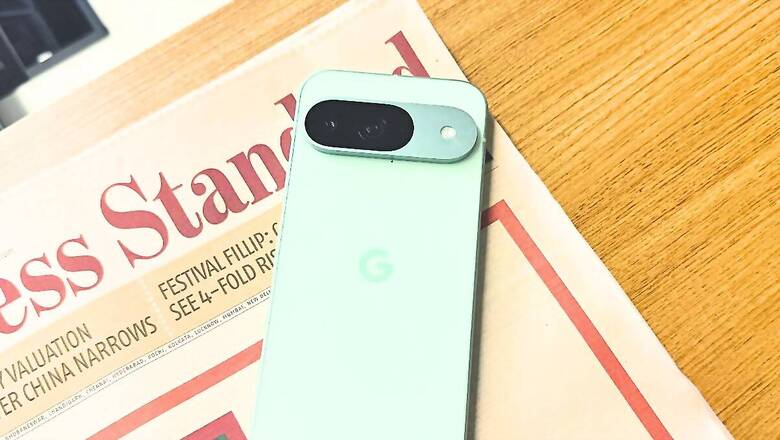
views
The Google Pixel lineup has expanded in size and quantity over the years but the charm of the regular Pixel model is undeniable. Google has revamped the design and the finishing of the new Pixel 9 series, giving it an almost iPhone-like avatar which is never a bad thing. That premiumness has been married with Gemini AI from day one, which is a feat that Apple has failed to match or better with the iPhone 16 launch.
Coming back to the Pixel 9, people often say the market for a compact phone is dead, which is why even Apple is now making big-screen models and ditched the Mini moniker.
But Google persists with the Pixel 9 even though the 9 Pro and 9 Pro XL grab all the headlines. For Rs 79,999 Google is hoping that people with the love for compact flagships are still happy to spend big on an AI-powered phone. And this is what we decided to find out during our time.
Compact And Now Premium
Google has given the Pixel 9 a premium makeover and the phone looks more polished than its predecessor. The aluminium frame on the side does offer a better finish compared to the chrome touch on the Pixel 8 and the overall dimensions can be deceivingly easy to use.
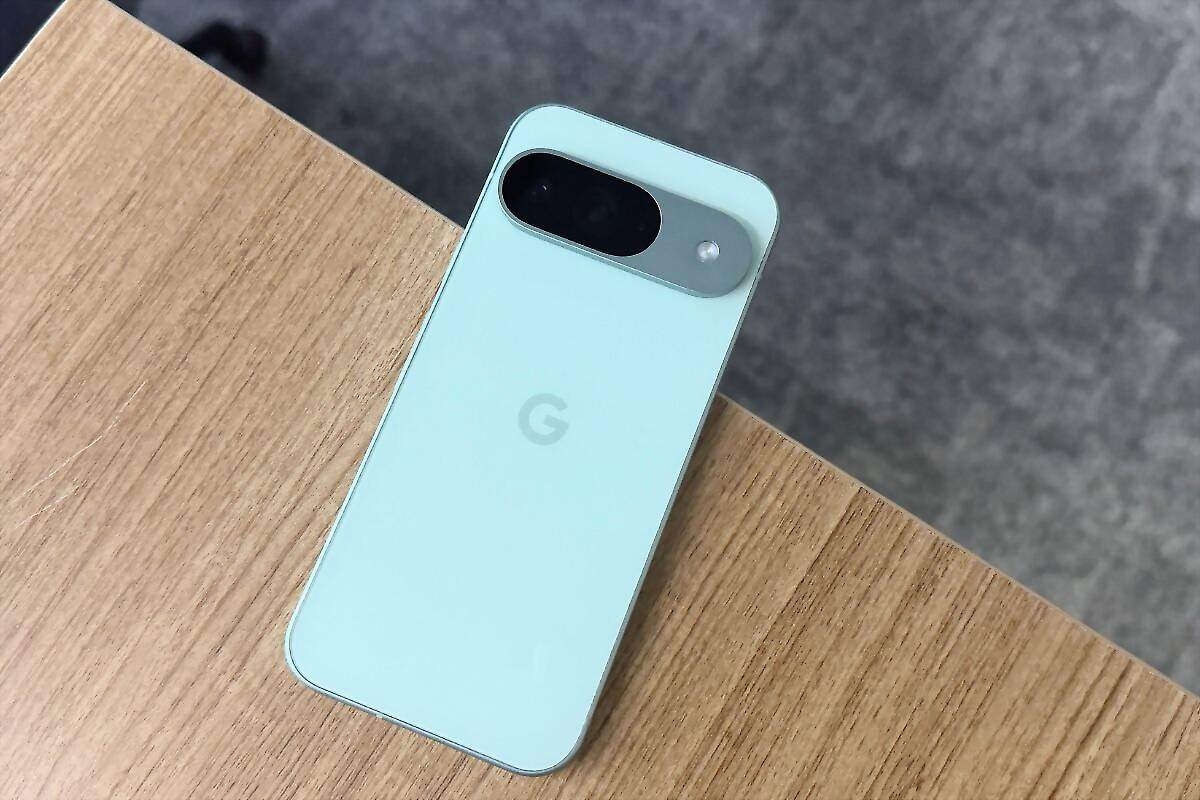
Make no mistake, the Pixel 9 weighs more than the Pixel 8 at 198 grams for the 6.3-inch frame but the width has come down from 8.9mm to 8.5mm which makes a lot of difference to how you can hold and grip the phone.

The camera visor is rounded and fits into the new design language seamlessly. Having said that, the glass panel without the matte finish at the back is not our preferred choice. In fact, we’d like Google to adopt the Pixel 9 Pro XL-like materials for all the models.
Pixel Goes Acuta-Rich
The Pixel 9 model sports a 6.3-inch OLED panel with a 120Hz refresh screen but the base model misses out on the LTPO technology which means the rates don’t adjust based on what is open on the screen. You will need to manually switch between 60Hz and 120Hz from the settings. Google does not offer 90Hz as an option which should have been included. What we cannot complain about is the quality of the display, which is rich, colourful and bright enough to be used outdoors.
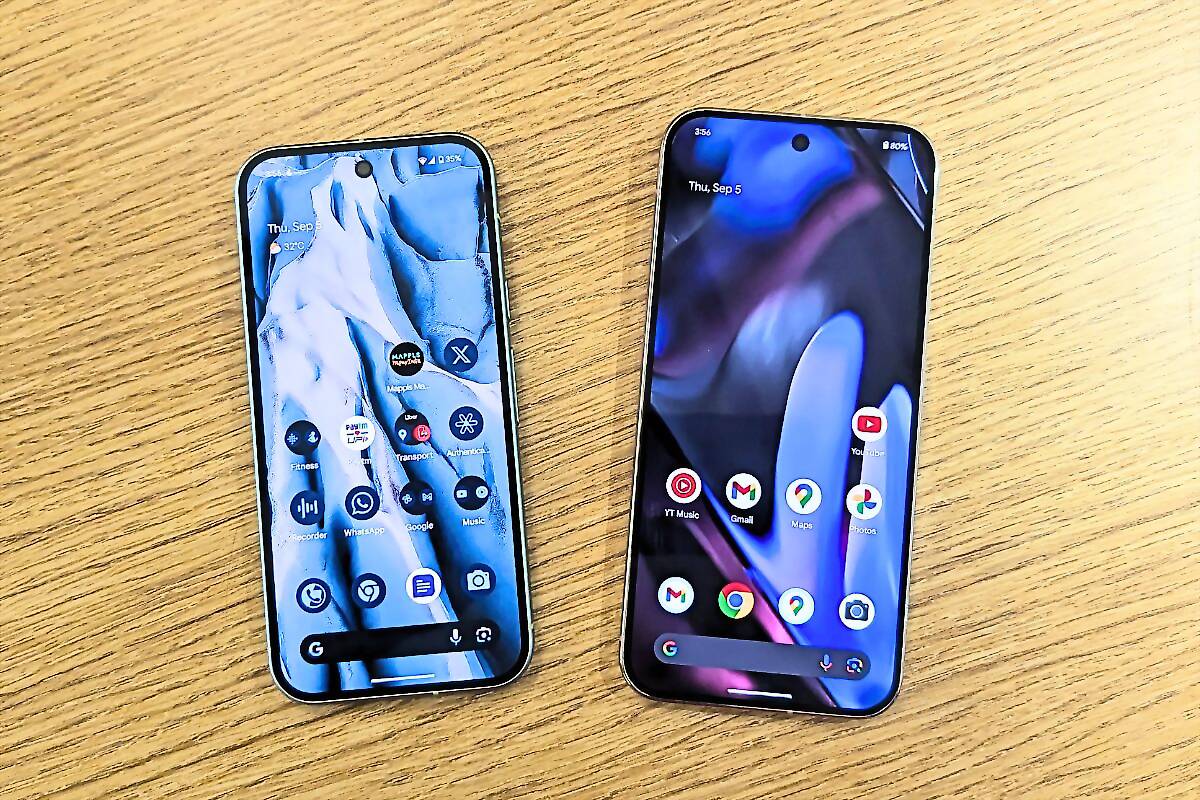
We also like the symmetry of the bezels on the display which, even though it is thick, blends in nicely with the edges from all sides. Google has finally upgraded to the ultrasonic fingerprint sensor on the Pixel 9 which is definitely better in terms of the response time and negates false touches. The display gets Corning Gorilla Victus 2 protection which fared well during our time and its stay inside pockets and bag was mostly scratch-free.
Old Android But AI Packed In
Google has made some welcome changes with the Pixel 9 series, but the company’s early launch in 2024 meant we got it with the older Android 14 version. Even then Google has managed to bring a slew of AI features from day one for the Pixel 9 series, which Apple didn’t offer with the iPhone 16 series.
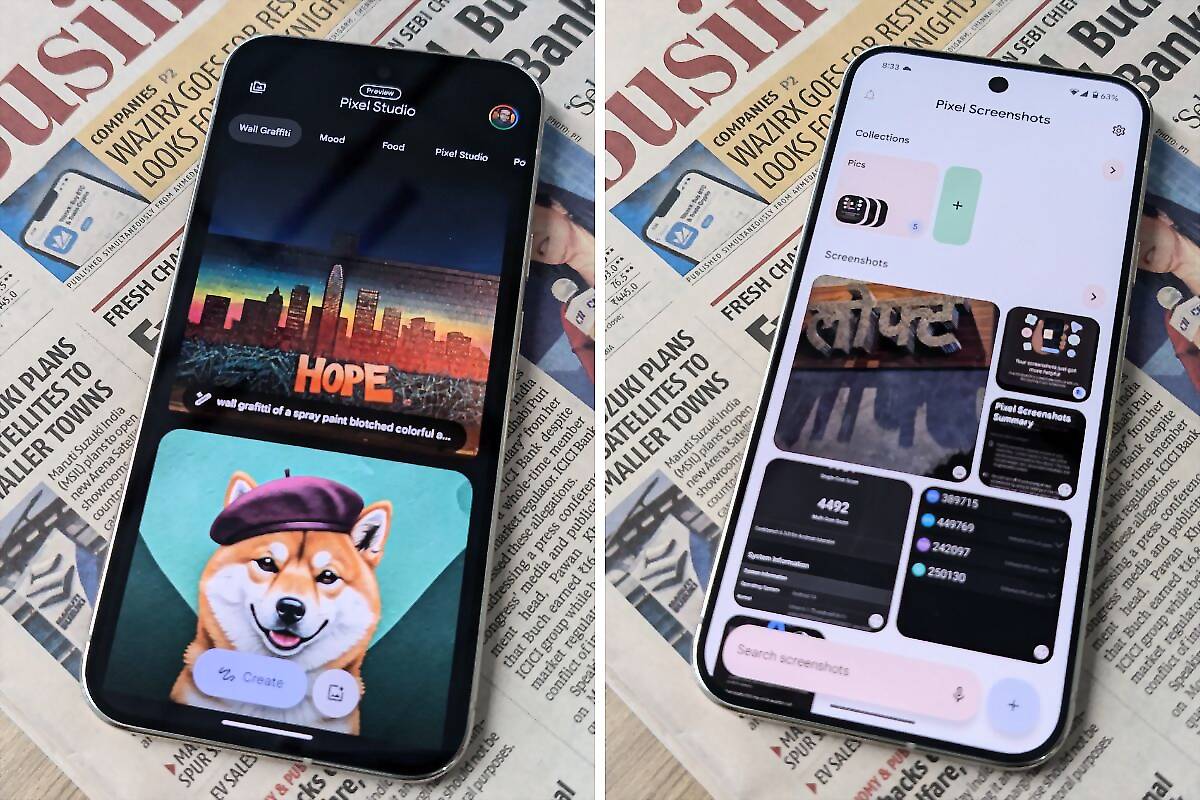
Talking about AI, you have Gemini that can now become the default voice assistant on the Pixel phones, which you can activate from the power button. Gemini Live is also available to let you have two-way conversations, about which you can read here. You also have the Pixel Screenshots app, Pixel Studio, and other AI integrations into the camera app on the phone.
The Studio app uses the power of AI to create images using the prompts that help you widen the imagination. The Android 15 update is expected in the next week or so, which should help Google add more features for these phones. And yes, Google does offer 7 years of OS and security updates for the new Pixel phones, which would be worth revisiting a few years down the line to see how the device ages.
Tensor Hardware An AI Beast
Google is not going after the benchmark tests with the Tensor G4 chipset which is now paired with up to 16GB RAM for the premium Pixel 9 phones. The regular Pixel 9 model gets 12GB RAM as the base memory, primarily to keep the AI features running smoothly. And during our time with the Pixel 9 and other models, the additional RAM has been tuned to run AI tools effectively.
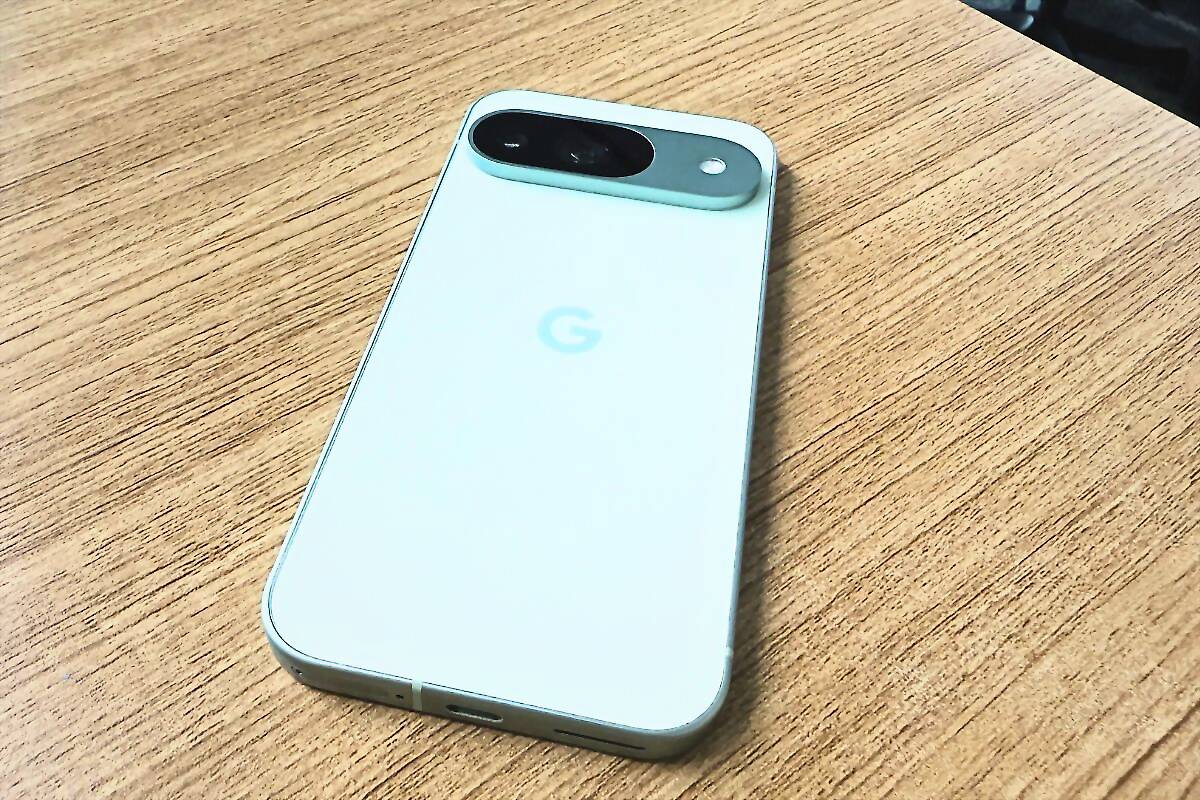
More importantly, the response time from the AI model sees the benefits of Google prioritising one over the other. Having said that, we’re not sure how long the G4 chipset can chug along, especially since its overall architecture is outdated, and a close match for the older Snapdragon 8 Gen chipsets.
You don’t feel its deficiencies while using the phone daily but the gradual slowdown seems inevitable if Google packs more AI into these devices. Our long term experience with the Pixel 8 and 8 Pro was largely positive but the Pixel 9 series needs to make a big jump and it seems to be heading in that direction.
The AI Camera Effect
Google started the computational photography era with the Pixel and it continues to milk the demand for these features. The regular Pixel 9 gets a new 48MP ultrawide sensor this year but the primary and the front cameras are the same. The images look identical when you shoot them using the Pixel 8 or the Pixel 9.

The colours are definitely a lot more punchy because of the Actua display but the details retained by the camera were the same. The addition of the new ultrawide lens means you can capture more details but even then you feel it falling short of the standards set by other flagship devices these days. Make no mistake, the Pixels are still good at clicking photos, it is just that others have caught up and now Google needs to make a bigger move with the next model.
Finally, It Lasts
A Pixel phone that runs long enough, that has been the dream for years and the Pixel 9 seems to be inching closer to make that happen. The new model seems to be using the good sides of the Tensor G4 chipset with better efficiency and we saw that in real time with over 7 hours of screen-on-time regularly delivered during the tests.
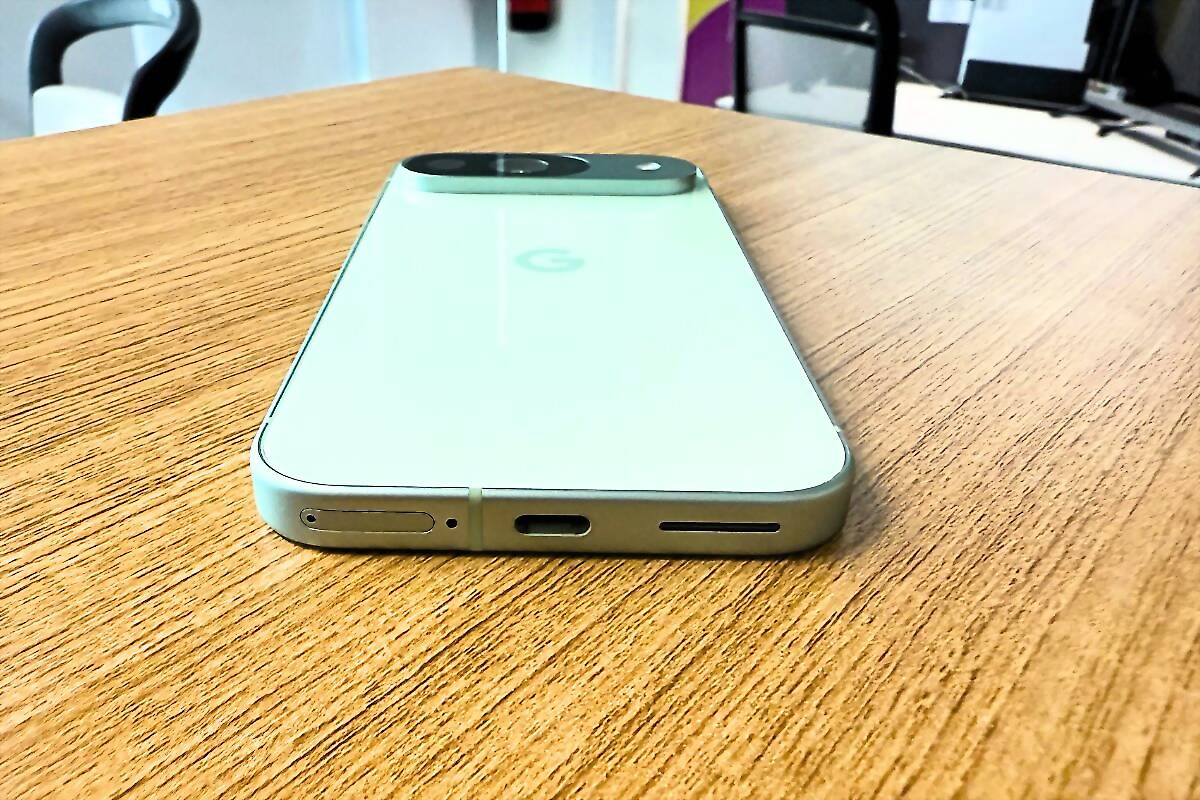
We can’t wait to see how the Pixel 10 behaves, especially if Google does make the much expected pivot to TSMC for its next Tensor chip. Having said that, some usual Google quirks remain and the charging speeds are still a pain, and very hard to get used to when you switch from a 100W or even 60W charging phone. The company doesn’t talk much about these speeds but for these prices, it is vital that Google at least makes a serious dent in the figures.
Pixel 9 marries its compact and premium design with reliable internals courtesy the Tensor G4 chipset with 12GB RAM. The AI features are a definite plus on this device and the cameras also benefit from these additions. The battery life has also improved and we didn’t notice a lot of heating on the phone.
However, the charging speed needs a bump and Google needs to keep its 7 years of OS update promise. The Pixel 9 is priced much better than the 9 Pro and 9 Pro XL but still a better bet if you get a good deal on the phone, which it does quite often and quickly.














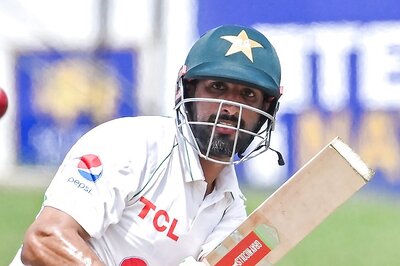




Comments
0 comment